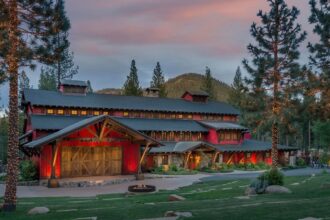What’s an office worth?
For corporate leaders, the office is an invaluable place of collaboration and creativity, fueling employee productivity. More companies are requiring workers back onsite, with 72.5% of private sector establishments reporting little or no telework among their employees, according to a recent Department of Labor survey. Office occupancy has reached a post-pandemic high of more than 50%, according to the latest data from Kastle Systems, which some business executives see as a predictor of more onsite work to come.
For building owners and investors, accustomed to valuations rooted in long-term leases, the value of their office assets isn’t as clear as the usage trends. Rising interest rates have momentarily sidelined dealmaking. Newer, well-located offices are seeing greater occupancy rates and lease demand compared with older buildings in secondary cities, creating a bifurcated market not just nationally, but around the globe.
This flight-to-quality creates more opportunities for investors and occupiers to align on return-to-office goals—and moves the role of property management into the spotlight. Today’s office buildings must be destinations, brimming with activity and novel experiences while realizing the most potential from every square foot. We’re seeing the rise of experience management, with property managers creating personal encounters and value-added moments for all stakeholders, not just long-term tenants.
The winning formula for quality office buildings is starting to emerge, even as valuations remain murky. The following are the three must-haves that top-performing buildings have in common and the ways in which these features may affect valuation in the months and years to come.
Sustainability is paramount
Sustainable office buildings are proving their resilience in more ways than one. As demand for greener buildings among company shareholders, employees and wider society grows, building owners are also scaling back energy demand by reducing consumption and improving efficiency.
While buildings that can quantify their sustainability efforts are retaining a “green premium,” a “brown discount” is emerging for older, less-efficient buildings lacking green certifications. These less-sustainable properties are seeing values fall as fewer tenants can weather the reputational and regulatory risk of ignoring sustainability goals in their real estate decisions.
The valuation gap between the green-building haves and have-nots will likely continue to grow as low-carbon demand outpaces supply. Retrofitting older buildings to feature technologies and systems that decrease carbon usage is one potential path forward, but investors may not want to commit to capital improvement projects in buildings in secondary markets when demand for those assets is waning.
Meanwhile, an inconsistent approach to measuring and reducing carbon emissions within the built environment, particularly in the United States, makes it difficult to compare properties. Building owners and property managers will continue to be charged with identifying the technology, partnerships and approaches to support greener buildings, even as regulations attempt to catch up to demand. We’re quickly approaching the point where clean energy infrastructure and technologies are must-haves for Class A buildings as part of an overall sustainability endeavor.
Flexible space beckons
In the not-so-distant past, flexible office space was a mark against a building, reflecting poorly on its image and bringing into question the creditworthiness of tenants. Today, flex is a necessity, with 43% of occupiers planning to expand their investment in flexible or coworking space over the next three years, according to a recent JLL survey.
Investors, owners and landlords have an unprecedented opportunity to take advantage of this trend, but the move to include greater flex space is not without its challenges. During the heyday of the return-to-office conversation, many landlords had to decide how to best incorporate flex into their property—whether to convert traditional office space to flex and whether to find a flex partner to fortify their overall building strategy. Now, the idea of flexible, shared space has spilled beyond the office to include pop-ups and activations that entice building tenants and the broader community into shared spaces.
A new conversation about how office space is valued is now emerging. Conventionally, valuations are based on securitized, long-term leases. However, that tradition isn’t keeping pace with new flex trends. Too much of the conversation focuses on setting a new benchmark for office occupancy, when other metrics, including footfall, may offer a more realistic and accurate measure of how a building is used.
Such a shift would represent a significant change in valuations, shifting to an auditable forecast rather than a historic review. With fewer leases being signed and shorter terms for those that are finalized, the industry will have to adapt to capture the value of in-demand, shorter-term commitments.
Amenities are more than a tenant draw
Building owners and property managers have been hard at work in recent months pioneering new ideas to generate revenue in the face of reduced or slowing rental income, while also creating a welcoming environment for tenants and others who step foot on the property. The rise of a hospitality mindset is not new but has taken on an outsized importance as building owners and investors try to differentiate their buildings.
The expected building amenities remain, including free group classes at the fitness center or tenant happy hours at a new restaurant. Now, however, owners are looking at new ways to monetize unused space. Some ideas include creating wedding venues or hosting Instagram-friendly art installations and other activations, many open to the public at large.
Some building owners are taking steps to move their properties firmly into the realm of mixed-use, adding retail and residential space. It falls to the property manager to clearly delineate different uses, while also offering a consistent experience and social connections through operations and technology. Done well, a hospitality mindset can improve tenant acquisition and retention and create new revenue streams that positively affect the bottom line.
Determining office values is no small task, especially with multiple variables from location, age, quality and demand. However, if the repricing of the sector is inevitable, owners and investors also have an opportunity to rethink the status quo and start measuring office building’s worth on metrics that truly matter.
Read the full article here










